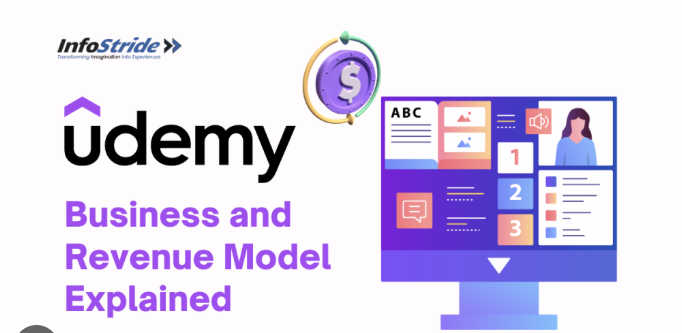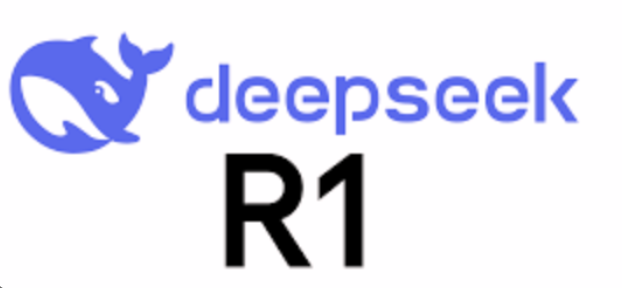3 Mistakes In TOP UDEMY COURSES FOR TECH That Make You Look Dumb
Discover 3 common mistakes in top Udemy courses for tech that can hurt your credibility—and how to avoid them smartly.
Introduction
Let’s be real.
You saw a flashy Udemy course: “Become a Full-Stack Developer in 30 Days!”
You bought it.
Started with energy.
And then… you either got stuck, dropped out, or worse — you completed it and still couldn’t build anything.
It’s not you.
It’s not Udemy.
It’s these 3 common mistakes that turn even top-rated tech courses into career slowdowns — and yes, they can make you look dumb if you’re not careful.

Let’s fix that.
👎 Mistake #1: Thinking “High Ratings” = “High Impact”
🤯 Why It Happens:
You scroll through Udemy. A course has 4.8 stars and 1 million students. Naturally, you assume:
“If a million people love it, it must be great for me.”
But here’s the twist: ratings often reflect the experience of beginners, not results for serious learners.
That’s right — many top courses on Udemy get great reviews because:
- The instructor has a charismatic voice
- The animations are cool
- It feels “easy” to follow
But easy doesn’t always mean effective.
⚠️ Why TOP UDEMY COURSES Makes You Look Dumb:
You finish the course and post your “new project” on GitHub… only to realize you:
- Copy-pasted most of it
- Don’t understand what each line really does
- Can’t answer technical questions in an interview
Then someone asks:
“Oh cool, which framework are you using React with?”
You freeze.
“Uhh… I just followed what the video did.”
Not a good look.
✅ What to Do Instead:
Before choosing a course:
- Look at the curriculum — does it go beyond the basics?
- Read the 1-star reviews — often, they reveal what’s missing
- Search on GitHub: “project repo [course name]” — see what students actually built
- If i am buying TOP UDEMY COURSES buts its not suitable for me learning and i am wasting my time watching Netflix instead of learning.
Also, ask: “Can I build a real app with this knowledge, without the instructor’s code?”
If the answer’s no — keep looking.
👎 Mistake #2: Watching Passively Like It’s Netflix
🎥 Why It Happens:
Let’s admit it — some Udemy tech courses are so well-produced, you feel like you’re watching a binge-worthy Netflix series.
Popcorn optional.
And that’s exactly the problem.
You start consuming tech knowledge like you’re watching “Stranger Things”, not like you’re training to become an engineer.
You might say:
“I’ll just watch all the videos first, and then build later.”
Translation:
“I’ll forget everything and hope muscle memory builds itself.”
⚠️ Why It Makes You Look Dumb:
Imagine telling your future employer:
“Yeah, I watched a course on React. But I didn’t really build anything myself.”
That’s like saying:
“I read a book on swimming. Haven’t tried water yet.”
If you can’t explain concepts, debug issues, or build small projects along the way, it shows — especially in tech interviews or coding tests.
Worse, it leads to false confidence, and that can kill your credibility.
✅ What to Do Instead:
Use the “3-1 Rule” for TOP UDEMY COURSES.
- Watch 3 minutes
- Pause 1 minute to apply it
Even if it’s just tweaking code, do something hands-on.
Also:
- Build mini-projects after each section
- Keep a “bug journal” to note where you got stuck
- Join the course’s Q&A or community — teach someone else
Because in tech, watching doesn’t make you smarter. Doing does.
👎 Mistake #3: Using a Single Course as Your Only Learning Source
📦 Why It Happens:
Udemy courses are often pitched as “all-in-one” solutions:
- “Learn Python from Zero to Hero!”
- “Master Data Science in One Course!”
- “Build 10 Projects with Just This One React Course!”
And yes — some of them are very well-structured.
But here’s the truth:
No single course can teach you everything you need to know in tech.
Even the best instructors can’t cover:
- Real-world complexity
- Industry best practices
- How technologies evolve over time
So if you stop learning after finishing one course, you’ve just scratched the surface.
⚠️ Why It Makes You Look Dumb:
Let’s say you’ve taken one course on machine learning, and you walk into a job interview.
They ask:
“How would you optimize an imbalanced dataset in production?”
You go blank.
Because your course didn’t go that far.
Or someone asks you about state management in React, and all you know is useState.
Trust me — people can tell when you’ve only learned from one script.
✅ What to Do Instead:
Use Udemy as your launchpad, not your entire flight path.
- Complement your course with YouTube tutorials, blogs, and documentation
- Join GitHub projects to see real-world code
- Follow developers on Twitter/X, Reddit, or Dev.to to learn current practices
- Read official docs like
reactjs.org,developer.mozilla.org, orpytorch.org
Also, do a “Course Reflection”:
- What didn’t this course teach me?
- What real-world challenges am I still confused about?
- What project can I build on my own now?
Turn your gaps into goals — and keep building forward.
🧠 Final Thoughts: It’s Not About Looking Smart — It’s About Becoming Skilled
Tech is not a checklist of completed Udemy courses.

It’s a skillset built over time, through:
- Practice
- Curiosity
- Struggles
- And yes, lots of debugging
Top Udemy courses are incredible tools. But how you use them makes all the difference.
Avoid these 3 mistakes, and you won’t just look smart — you’ll actually become the tech pro others look up to.
🔧 Bonus Tip: The “T.A.B. Method” for Smarter Udemy Learning
T.A.B. = Take – Apply – Build

- Take: Choose a course aligned with your goals
- Apply: Don’t move forward until you’ve coded it yourself
- Build: Make your own version of every project in the course
This habit alone will 10x your outcomes.
📌 TL;DR — Don’t Be “That Guy” in Tech
Here’s your quick cheat sheet:
| Mistake | Why It Hurts | What to Do Instead |
|---|---|---|
| High ratings = high impact | May be surface-level | Check syllabus, 1-star reviews, and GitHub |
| Passive watching | Leads to fake learning | Use the 3-1 rule, build mini-projects |
| One course is enough | You’ll lack real-world context | Combine with docs, communities, extra content |
🚀 Ready to Level Up?
Take your TOP UDEMY COURSES — but this time, do it smarter.
Because in tech, the dumbest thing is not making mistakes —
It’s not learning from them.







Portable balancer & Vibration analyzer Balanset-1A
Description:
Price:
7500 PLN / 44250 CZK / 1751 EUR / 715000 HUF Full kit Order on Allegro
6700 PLN / 39550 CZK / 1561 EUR / 640000 HUF OEM kit Order on Allegro
Details of the Balanset-1A
The Balanset-1A is a compact, dual-channel tool created for balancing and vibration analysis of rotating machinery. It excels in balancing rotors such as crushers, fans, mulchers, choppers, shafts, centrifuges, turbines, and more.
Primary Functions and Features
Vibration Measurement Mode
Tachometer: Accurate measurement of rotational speed (RPM).
Phase: Determines the phase angle of the vibration signal for precise analysis.
1x Vibration: Measurement and analysis of the primary frequency component.
FFT Spectrum: Detailed analysis of the vibration signal’s frequency spectrum.
Overall Vibration: Monitors overall vibration levels.
Measurement Log: Keeps a record of data for further analysis.
Rotor Balancing Mode
Single-Plane Balancing: Adjusts rotors in a single plane to reduce vibration.
Two-Plane Balancing: Dynamic rotor balancing in two planes.
Polar Diagram: Visualizes imbalance on a polar chart for precise placement of corrective weights.
Last Session Recovery: Enables continuation of the previous balancing session.
Tolerance Calculator (ISO 1940): Computes permissible imbalance per ISO 1940 standards.
Grinding Wheel Balancing: Utilizes three counterweights to balance grinding wheels.
Charts and Graphs
Overall Graphs: Displays general vibration levels.
1x Graphs: Shows vibration characteristics at the primary frequency.
Harmonic Graphs: Represents the influence of harmonic frequencies.
Spectral Graphs: Presents the frequency spectrum for detailed examination.
Extra Features
Archive: Retain and retrieve previous balancing sessions.
Reports: Automatically generate detailed balancing reports.
Rebalancing: Facilitates rebalancing with previously saved data.
Serial Production Balancing: Suitable for balancing rotors in mass production settings.
In the Box
The Balanset-1A kit includes:
A measurement module with interface.
Two vibration sensors.
Optical sensor (laser tachometer) with magnetic mount.
Electronic scales.
Software (laptop can be ordered separately).
Plastic transport case.
Price:
7500 PLN / 44250 CZK / 1751 EUR / 715000 HUF Full kit Order on Allegro
6700 PLN / 39550 CZK / 1561 EUR / 640000 HUF OEM kit Order on Allegro
I love your blog.. very nice colors & theme. Diid you make
this website yourself or did yyou hire someone to do it for you?
Plz respoknd as I’m looking too create my own blog andd would like to know where u got this from.
thanks a lot
Heere is my web page https://www.fapjunk.com
Keepp oon writing, great job!
my blog post … https://www.letmejerk.com
ljzcqp